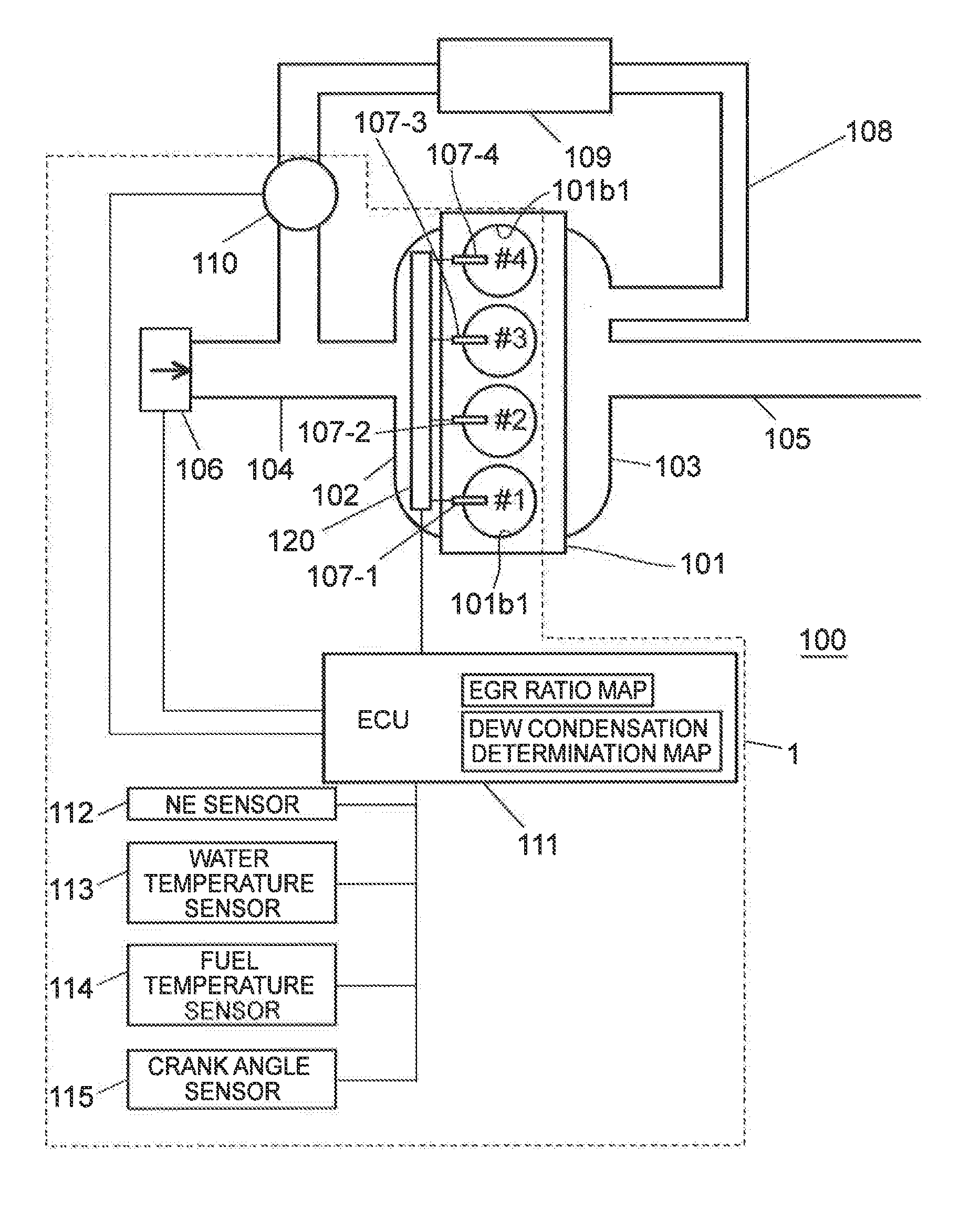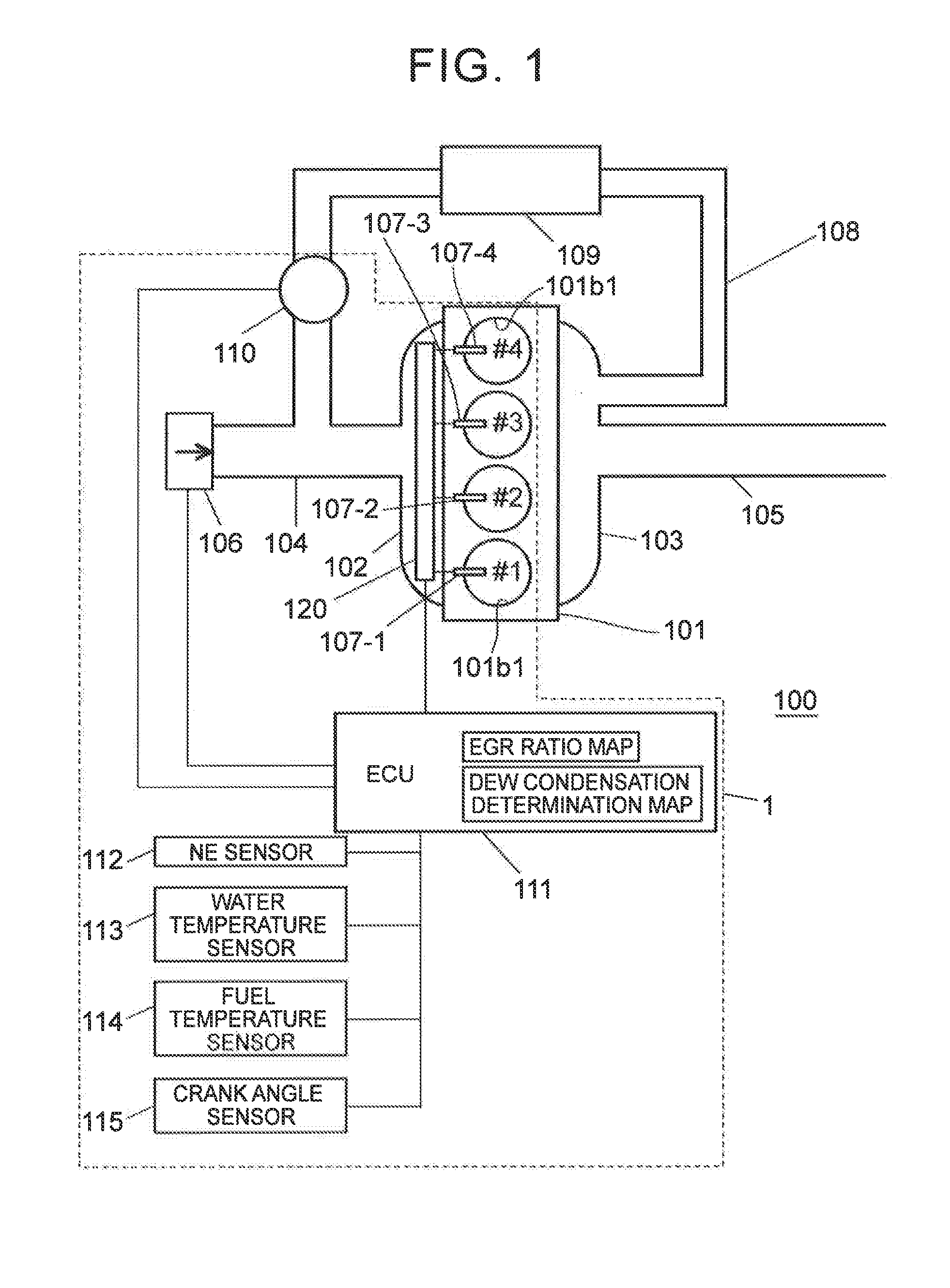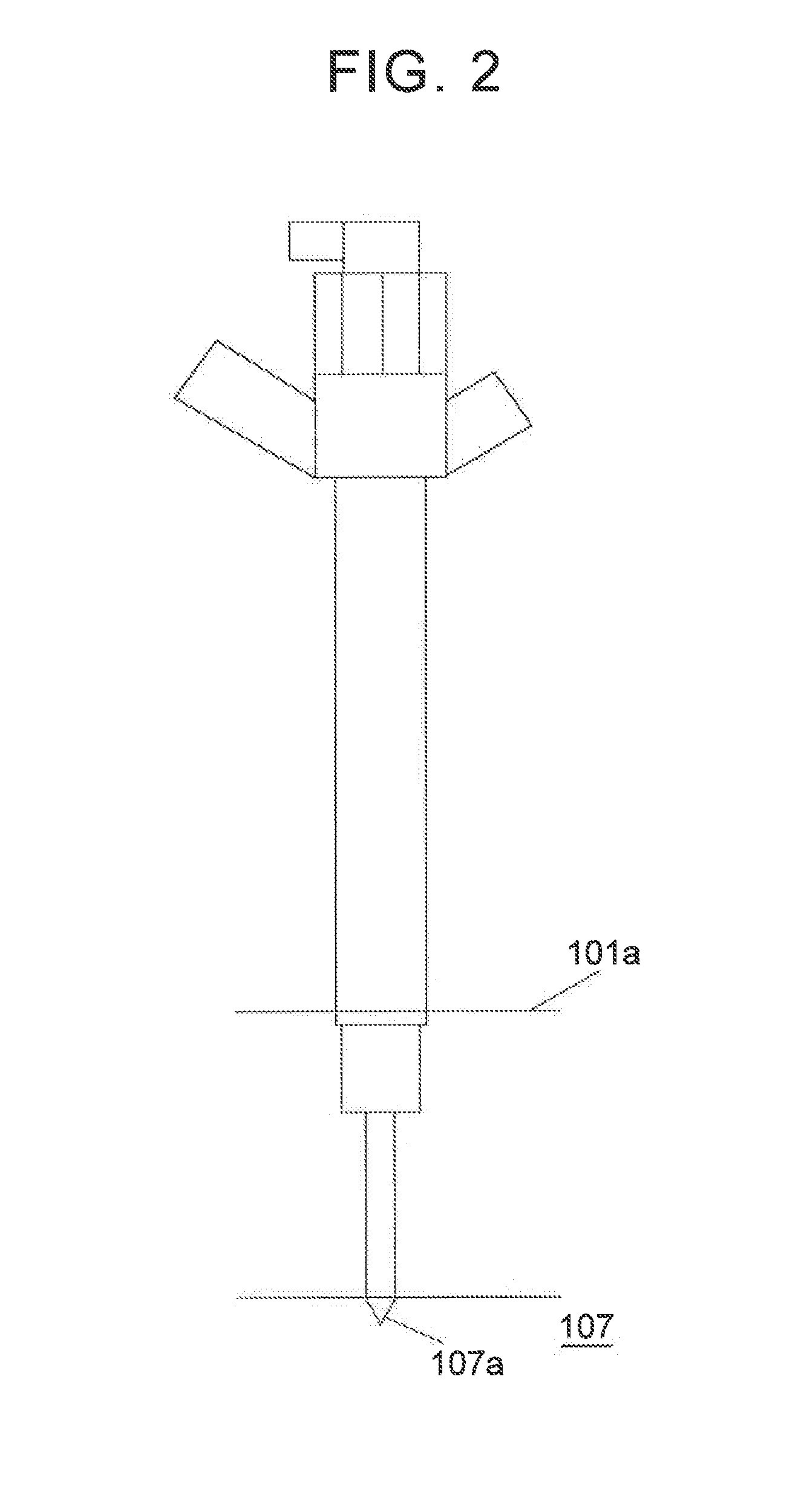Internal combustion engine
a combustion engine and combustion chamber technology, applied in the direction of electrical control, corrosion prevention fuel injection, instruments, etc., can solve the problem of difficulty in accurately predicting the course of achieve the effect of reducing the nozzle tip temperature reduction rate, increasing the heat receiving amount of the nozzle, and less likely to be reduced the nozzle tip temperatur
- Summary
- Abstract
- Description
- Claims
- Application Information
AI Technical Summary
Benefits of technology
Problems solved by technology
Method used
Image
Examples
first embodiment
[0039]FIG. 1 is an explanatory drawing illustrating a schematic configuration of an internal combustion engine 100 according to a first embodiment. A fuel injection device 1 is incorporated into the internal combustion engine 100. The internal combustion engine 100 is an internal combustion engine that performs in-cylinder injection, more specifically, a diesel internal combustion engine. The internal combustion engine 100 is a four-cylinder internal combustion engine. The internal combustion engine 100 is provided with an engine main body 101 that is provided with a cylinder head 101a and a cylinder block 101b, and is provided with #1 to #4 cylinders in the engine main body 101. The fuel injection device 1 is incorporated into the internal combustion engine 100. The fuel injection device 1 is provided with #1 to #4 injectors 107-1 to 107-4 corresponding to the #1 to #4 cylinders. Specifically, the #1 injector 107-1 is mounted on the #1 cylinder, the #2 injector 107-2 is mounted on ...
second embodiment
[0065]Hereinafter, a second embodiment will be described with reference to FIGS. 8 and 9. FIG. 8 is a flow diagram illustrating an example of the control of the internal combustion engine 100 according to the second embodiment, specifically, idle extension control. FIGS. 9A and 9B are graphs illustrating the change in the nozzle tip temperature that is caused by idle extension.
[0066]The difference between the second embodiment and the first embodiment lies in details of the nozzle corrosion prevention control (control for nozzle heat dissipation rate reduction) performed by the ECU 111. In the second embodiment, the idle extension control is performed instead of the racing implementation control of the first embodiment. In other words, the details of Steps S1 to S8 in the flow diagram illustrated in FIG. 4 are identical to those of the first embodiment. The basic configuration of the internal combustion engine 100 is identical to that of the first embodiment, and thus detailed descr...
third embodiment
[0076]Hereinafter, a third embodiment will be described with reference to FIGS. 10 to 13. FIG. 10 is a block diagram illustrating a main part of the internal combustion engine 100 according to the third embodiment. FIG. 11 is a flow diagram illustrating an example of the control of the internal combustion engine 100 according to the third embodiment. FIG. 12 is an explanatory drawing schematically illustrating the manner of piston cooling according to the third embodiment. FIGS. 13A and 13B are graphs illustrating the effect of the piston cooling.
[0077]Referring to FIGS. 10 and 12, the internal combustion engine 100 according to the third embodiment is provided with an electric oil pump 121, which is electrically connected to the ECU 111, as a main part thereof. As illustrated in FIG. 12, the electric oil pump supplies oil to oil jets 122 that cool pistons 101c which are accommodated in a cylinder block 101b. The oil jets 122 are disposed in the respective cylinders, inject the oil ...
PUM
| Property | Measurement | Unit |
|---|---|---|
| temperature | aaaaa | aaaaa |
| arrival time | aaaaa | aaaaa |
| heat dissipation rate | aaaaa | aaaaa |
Abstract
Description
Claims
Application Information
 Login to View More
Login to View More - R&D
- Intellectual Property
- Life Sciences
- Materials
- Tech Scout
- Unparalleled Data Quality
- Higher Quality Content
- 60% Fewer Hallucinations
Browse by: Latest US Patents, China's latest patents, Technical Efficacy Thesaurus, Application Domain, Technology Topic, Popular Technical Reports.
© 2025 PatSnap. All rights reserved.Legal|Privacy policy|Modern Slavery Act Transparency Statement|Sitemap|About US| Contact US: help@patsnap.com



